This post follows a Mad in America Webinar about Antidepressant Dysregulation Syndromes, which was built on the research done by people on these meds. Antidepressant linked Automatism Spectrum Disorders is also built entirely on reports from those who have been taking these medicines. You will hear some extraordinary things few people know about. We need more reports like these and some help in building up an explanation for how they coma about.
Antidepressant induced Homicide also brings the complexities and contradictions of prescription only medicines to a focus and challenges us – Does Prescription-only doom Good Clinical Care and Justice ?
A video recording of the talk is here
And a fuller version of Mad in America recording along with Q and A will be embedded here once it is available along with follow up discussions.

Slide 1: In 1997 an email from a Los Angeles law firm asking me to be an expert in a Prozac suicide and homicide case. The firm could not get a credible N American expert and found me from a paper 7 years earlier outlining how Prozac made 2 of my patients suicidal – see Let Them Eat Prozac.
It is getting more difficult to get an expert witness in cases. When 16 year old Romain Schmitt died in France, his parents could not get a French expert. Doctors find it increasingly difficult to work out how to assess your case against the background of Pharmaceutical Company Evidence Based Medicine. This is your first challenge. Funneling all problems through increasingly few experts can’t work.
Slide 2: Here’s Christopher Pittman with his grandfather. Chris regularly stayed with his grandparents – went to school and Church from there. After an argument with his father when 12 years old he ran away from home, was picked up by the police and brought to a children’s mental health unit where he was put on Paxil and later Zoloft for no good reason. See – Antidepressants and Violence.
The Unit contacted his grandparents who brought him to their place. Zoloft agitated Christopher who began picking fights with kids on the school bus that he had never done before and became restless in Church which finally led his grandparents to say this has to stop or you’ll have to go back to your father.
That night a voice, he says, told him to shoot them. He did and drove away in their Jeep. Picked up by the police he seemed confused and asked about his grandparents. The police found the house burnt down.
Slide 3: He was tried 4 years later when he was 6 foot tall. Headlines like ‘Evil’ or ‘Chemically Compelled’ featured in the South Carolina press covering the case.
There is no case in South Carolina that addresses involuntary intoxication by prescription drugs. It seems to turn the whole medical system on its side if you can’t rely on the medication your doctor prescribes. It potentially forces you into a situation of lifetime commitment if that drug induces an effect of which you are unaware. There’s something disconcerting about that, probably of a legal nature that is troubling me.
Slide 4 The Jury found Christopher guilty. As you see from this quote the Circuit Court Judge, Daniel Pieper, said the case troubled him but he sentenced Christopher to prison for 3 decades. Our challenge is to solve Daniel Pieper’s dilemma.
Slide 5: No jury has ever let a person who killed others walk free from court on a claim the drug did it. Here you see Don Schell on the left who 48 hours after starting Paxil shot his wife Rita, daughter Deborah, grand-daughter Alyssa and himself. Tim Tobin on the right who wasn’t there took a case against GSK. A jury in Wyoming agreed Paxil did it. But this was a civil case not a criminal case and the ‘criminal’ was dead. No one was let walk free.
Slide 6: At almost the exact same time as the Tobin verdict, David Hawkins who killed his wife while on Zoloft did walk free. The judge, prosecutor and defense agreed Zoloft had caused it. Legal systems can think it’s obvious a drug has caused a homicide but to get the right result they need to sidestep a jury.
Legal systems even juries routinely blame drugs in cases of suicide – at inquests. They say this person is not guilty of suicide as they did not have the intent to commit suicide.
Industry mobilized to make sure this would never happen again. Their weapon is Us – you and me. The prosecutor in Pittman had a Zoloft Prosecutors manual to help him.
Homicides cause Us a problem, in a way suicides don’t. Juries are US and we want to hold someone responsible. Do we hold the person, their doctor, regulators or companies responsible? We worry about re-offending. In the case of a suicide – there will be no reoffending.
If by the unskillfulness of his physician or the contrivance of his enemies, a person eat or drink such a thing as causes a temporary or permanent frenzy, this puts him in the same position in reference to crimes as any other frenzy and equally excuses him. Hale 1736
Slide 7: This 1736 quote from Matthew Hale, England’ Chief Justice, outlines a legal basis for letting someone walk free. This was the original insanity defense. Those affected were delirious or frenzied – that is stark raving mad. Frenzies were caused by a physical illness giving rise to a fever or from a poison. The person either died soon afterwards or recovered and was clearly different to the person who had killed someone.
Slide 8: This insanity defense ran into trouble in 1800 when Philippe Pinel distinguished between a delirious person on the left and someone Mad without Delirium. This new kind of insanity was defined by the McNachten case in 1843 which said you could only be not guilty if the idea that led to the killing was self-defense – the kind of idea that might make you not-guilty in real life. Even if insane in the new sense, it was assumed you could tell right from wrong and your insanity meant you were locked up.
Slide 9: Over time we refined this. People who walked and killed in their sleep were deemed not guilty. Their mind was not present at the event. Similarly a reflex movement, like trying to swat away a hornet while holding a gun, that resulted in a death could lead to a not guilty verdict because the intent to kill is not there. The word automatism centers on the question of intent and choice.
Claiming he had walked in his sleep. Albert Tirrell was found not guilty in 1846 although most experts now figure he’d be found guilty on the basis that, while he appeared dazed and confused to others later, he had also burnt the house down in which the dead woman was – which for most people now suggests Intent. Questions about Hypnosis and Multiple Personality Disorder have come into play as well since mostly confirming ideas that blaming other factors are mainly excuses.
Torching his grandparents’ house may have made it difficult for the jury to acquit Chris Pittman.
An old joke has Hot Shot Lawyer after dinner speaker at a gathering of wealthy women telling them “I’m sure most of you have wanted to kill your husband at some point. If you do, come to me, I can get you off anything – provided you don’t reload”.
Slide 10: Zelmid, the first SSRI, launched in 1982. Twenty years before Zelmid, serotonin reuptake inhibiting antidepressants were linked to suicide and homicide. Long before Zelmid, the idea there was anything wrong with the serotonin system in depression had been junked.
Slide 11: Arvid Carlsson created the SSRI idea and Zelmid. He made clear how big a role techniques played in this field. Get a new gadget that showed where drugs Go and see something no-one has seen before, and you get labelled brilliant – everyone here could do the same. Carlsson also had a gadget which told him what drugs Do – he paid heed to people reporting a serenic effect with drugs active on serotonin. Hearing this effect suited some led to SSRIs. Carlsson also heard SSRIs could make others suicidal. Listening is a technique fewer and fewer people employ these days.
Carlsson’s view was SSRIs, like LSD, working on a normal serotonin system, could cause good and bad effects. Some people might find a serenic effect effect helpful – a therapeutic principle.
The SSRIs became antidepressants because of a 1980s benzodiazepine dependence crisis – antidepressants were not associated with dependence. Whether you call it dependence or dysregulation, we now know exposure to SSRIs can cause problems that last for decades after stopping. Treating and stopping is not the same as not treating.
Slide 12: My message at Pfizer’s 1992 UK Zoloft launch, which I chaired, was Serotonin is more primitive than Estrogen. Drugs acting on it will show us things we have never seen before. We need to keep our eyes and ears open.
This seemed a reasonable message to a company who had just discovered Viagra this way but Pfizer’s 1992 message was we know all about Zoloft – doctors just need to prescribe and patients to swallow it.
Slide 13: As this wonderful Michael Leunig cartoon from nearly 30 years ago shows, Marketing saw to it that cases of Valium became cases of Prozac and Zoloft. Marketing turned SSRIs into Vitamin Serotonin, which corrected a brain abnormality. No hint here of a serenic effect that might be helpful if we knew how to use it or of hazards we should keep an eye out for. For drug companies the doctor in the bottom right is the consumer not you who take the pills and this lies at the heart of Daniel Pieper’s dilemma. As in any business, the company job is to keep the consumer happy/fooled.
Slide 14: Before marketing the companies ran two week healthy volunteer trials, in which people, like Traci Johnson, became suicidal and aggressive. So companies knew adverse events were coming from which doctors needed to be shielded – especially as no-one would get anything less than a toxic dose. .
Slide 15: Part of our problem stems from an event 400 years ago. The body was becoming a machine – the heart which many thought the seat of the soul had become a pump. Rene Descartes relocated the soul to the Pineal Gland. a Ghost in the Machine. If our foot strays too near a flame, he argued an image runs up nerve fibres to the pineal gland where the soul looks at it and decides to move the foot. This wise decision demonstrated the existence of a Soul that is Me.
It led to Descartes famous Cogito ergo Sum – I think, therefore My Soul is. This is the bit of us that does philosophy and science and decides on Good and Evil and in so doing determines whether we go to Heaven or Hell, when the machine disintegrates. With Homicide we are in the Good and Evil business.
Slide 16: It took 200 years for us to recognize that reflex reactions happen without thought. The wisdom of the body takes care of things. Over the next 50 years we realized most of our behavior is automatic and unconscious.
This opened the door to Sentio ergo Sum – I Feel therefore I Am. A Mysterious Me has Hunches – a quite different knowledge to a scientific or philosophical Soul who is either good or evil.
Slide 17: William James and Carl Lange grasped the importance of this. They told us our senses tell us what is going on in the world around us and within us and our brain’s efforts to interpret these feelings often gets things wrong.
Slide 18: A decade later Freud claimed he could interpret the true meaning of our automatic and unconscious feelings, our hunches. Rather than listen to and learn from us, like James and Lange, he created a Cogito ergo Tu Es – What I (the Expert) Think about You is What You Are.
You and I have libido – something we can register pretty well. But Freud had a more mysterious Libido – something that couldn’t be measured or tied down but based on which he figured he knew more about what was going on in us than we do. This led the Freudians to march into medicine and tell people what was really going on in heart attacks and into law and tell everyone who was guilty and who not – giving mental health input a poor name in medicine and law.
We think Freud has died and been replaced by Biological Psychiatry – Far from it. We now have Bio-Freudians whose Serotonin bears no more relation to the real Serotonin in us than Freuds Libido. It can’t be measured but based on it these guys think they know more about what is going on in us than we do. We have replaced a psychobabble with a biobabble.
Today’s biobabblers are giving mental health just as bad a name as the Freudians by failing to get involved in legal cases and allowing companies to lay the blame on us for things the drugs doctors give us have done. It is all very Freudian.
Slide 19: Before Biological Psychiatry took over, psychopharmacology was built on James-Lange ideas. Beta-blockers for anxiety for instance fooled brains by blocking rapid heart rates, sweating, or shakes. They are also used to treat cardiac and blood pressure problems and physicians, who know nothing about mental health, warn people stopping them that their increased heart rates and shake do not mean they are anxious.
Beta blockers taught me another useful lesion. In a pharmacology practical, I had to give one to a colleague and monitor her pulse which should slow. She became anxious and her pulse rate had gone up. According to the books, this was impossible.
What is Real is what is happening in front of you rather than what you read in books. Books may be helpful but their contents are not real. One of the problems with the Biobabblers is they are people of the Book. They have no idea how to engage with the person in front of them. Faced with a beta-blocker increased heart rate they can be depended on to give more beta-blocker to slow it down.
Slide 20: T Rex has a tiny reptilian brain untroubled by a human soul. There is no cortex. His brain is an extension of the spinal cord. The Blue Dot is a norepinephrine nucleus. The greenish dot is the raphe nucleus which contains serotonin. I view the Reptilian brain as part of the body – if you grant me that then 100% of our serotonin is in our Bodies – otherwise 5% is in our brains and 95% in our bodies.
We will come back to the Cortex – where the scientific and virtuous Ghost lives.
Slide 21: So do SSRIs fool the brain? In 1999, in this Unit in Wales, we randomized healthy medical and nursing staff to either Zoloft or a norepinephrine reuptake inhibitor. Would staff detect a serenic effect from Zoloft – the observation that led Arvid Carlsson to create SSRIs? They did. One in ten on Zoloft also became suicidal and one in twenty became aggressive.
No patients had any idea any staff were on anything. But within 24-48 hours, patients could tell me doctors were on a drug and knew who was taking an SSRI? Primed by them I can now tell who is on these meds – there are changes in facial expression, body language, demeanor and even smelt.
Staff are supposed to be trained scientists who based on close observations monitor and adjust treatment, but they don’t notice things like this in patients. They are Freudian experts who know better than you do about what is going on in you without looking at or listening to you.
Those on the meds follow James-Lange and can see expert brains being fooled. They need to rise up and take over the asylum.
Slide 22: This Pet Scan on the left shows a normally lit brain. On the Right the same brain after volunteers had one Lexapro dose. The researchers say Hey look one dose can turn the brain off.
One dose does not turn a brain off by acting on it. SSRIs shut down sensory systems in our guts, bones, blood, vision, smell, balance etc and this results in a quiet brain. There is a lack of feeling inputs from our bodies. Within 30 minutes of a first pill SSRIs make you genitally numb – the brain genital area goes quiet. Rubbing Lidocaine gel into genitals does the same thing – without acting on the brain..
Now look at this quote from a person on an SSRI.
The mental symptoms are an altered state of consciousness that one absolutely cannot comprehend if he didn’t experience it. No words can explain such a thing. Every day I am shocked that such a state is possible.
The best way to describe it is mental anesthesia. Everything in the mind is tuned down so low, even thoughts. The mind is blank, emotions so muted they are barely relevant.
It’s the opposite of what psychedelics do to the mind. They enhance and amplify. SSRIs completely mute. Everything feels wiped out. There is no mind anymore
Slide 24: Maxime Villeneuve
Slide 25: This is the guillotining of Louis XVI of France in 1791. When ISIS were videoing the beheading of Westerners in the Middle East, people on SSRIs watched these in order to ‘be able to feel’ something.
Slide 26: SSRIs genitally numb you and mute orgasms and over time your libido falls. You expect things to return to normal when you stop treatment but they may get worse and you may not function for decades – this is Post SSRI Sexual Dysfunction (PSSD).
In terms of people on meds with no background in Healthcare telling experts what the meds really do, this PSSD podcast featuring Roy, Bryn and Simon is worth more than close to the entire medical literature on these drugs.
Bryn: Getting PSSD undermines your faith in the medical establishment and the whole system of science as we have it – the fact that none of these professionals understand this condition or know anything about it when we know we have it – it’s not some vague feeling. Losing you libido is equivalent to going blind or deaf, it’s that level of sensory impairment
Roy: The same can be said for losing your emotions – I felt I lost two senses – my sexuality and my emotions
Bryn: If we want to be believed we have to remember just how incredible our story sounds … It’s a hard thing to wrap your head around… My Dad says it’s not possible a drug could cause these effects, it wouldn’t be on the market
Slide 27:
Its not the getting of PSSD that is the problem here. Losing a sense or senses is like having an Arm removed and going into a doctor and saying look I’ve lost an arm and the doctor saying you look fine to me. The not listening – the inability to listen – causes a loss of faith in modern science and medicine.
The idea that an SSRI may cause Homicide will evoke exactly the same response.
Slide 28: The PSSD podcast is recent. Thirty years ago Peter Kramer in Listening to Prozac talked about people becoming Better than Well on Prozac citing a man who had been homosexual becoming heterosexual. In 1958, 35 years before Kramer, Roland Kuhn reporting on the Serotonin Reuptake Inhibiting, Imipramine, made the same claim.
These are personality changes not treating illnesses. There is no reason to think these meds have been sent by God to make people into saints. Rather than Better than Well we may be more likely to end up Worse than Ill. To adapt a well-known saying:
Better than Well Claims get half-way round the world
before Worse than Ill claims get their boots on.
Slide 29: This extraordinary book and movie brings out what can happen. A schoolteacher takes sexual advantage of a teenage male pupil. No pills are mentioned in this script but Zoe Heller, the author was on Prozac. Lots of female school-teachers have since pled not-guilty on the basis that they were on SSRIs. Some have been acquitted. In other cases, judges have refused to let the argument into Court.
Jan Akerblom in his remarkable – Who Cares in Sweden – asked how valid are the contracts we sign if the drugs we are on lead us to take risks we would not normally take.
Slide 30: Why a Dove of Peace throwing away the Olive Branch – well even a bird brain can have a change of personality. Our personalities, our habitual responses, are shaped by our reflexes. These are driving by sensory priming so much so that others can often see our likely actions, our emotions, before they happen. Family, friends and patients can see our responses change on treatment. They might figure its an illness responding but it’s not – it’s personality change..
What we need to get hold of is that these emotional changes are not neutral. They give rise to anguish or agony, words whose origins mean being throttled or in a state of conflict.
Where does the conflict come from if everything is muted? Do we still have a choice – Are we still in control?
Slide 31: The roots of Rauwolfia Serpentina gave rise to Reserpine, which acts on the serotonin system. In the 1950s, reserpine was given to people with no mental conditions as a treatment for hypertension. Many people described its effects as good psychotherapy in pill form – they felt Better than Well. Others described:
Increased tenseness, restlessness, insomnia and feeling very uncomfortable (Achor et al 1955)
The first few doses frequently made them anxious and apprehensive… they reported increased feelings of strangeness, verbalized by statements such as I don’t feel like myself… I’m afraid of the unusual impulses I have. (Faucett et al 1957)
Slide 32: Akathisia is tied to suicidal, violent and homicidal events – to emotional turmoil rather than muted emotions.
Slide 33:
The person in whom its invisible agony reaches an unendurable level will kill herself the same way a trapped person will jump from the window of a burning high-rise…
The terror of falling.. is still as great.. It’s not desiring the fall; it’s terror of the flames. You’d have to have personally been trapped and felt flames to understand a terror beyond falling
David Foster Wallace is describing akathisia. Trying to explain akathisia to a prosecutor I used his quote. Her response was “Well you still have a choice don’t you?” Does having a choice mean you intend something? In the Korean War – Did having a choice to badmouth the US when a gun is pointing at your head mean captured soldiers intended what they said?
Slide 34: Would Bruce Springsteen agree with the prosecutor about choice:
I was so profoundly uncomfortable in my own skin that I just wanted OUT. It feels dangerous and brings plenty of unwanted thoughts.
For the first time, I understood what drives people toward the abyss. The fact that I could feel this left me in a cold fright. There was no life here, just an endless irritating existential angst embedded in my bones. It was demanding answers that I did not have.
Bruce is describing akathisia. He doesn’t use the word or blame his drugs. He has likely been told by his doc or others never to blame the pills for causing problems – you will put people off taking them and will have blood on your hands if you do.
Slide 35. Twenty years ago, SSRI companies rebranded PMT as PMDD and claimed their drugs help this terrible state. Prozac was rebranded as Sarafem for the purpose. SSRIs might help some women by numbing them but the irritability element of this Sarafem advert and the cartoon hints at akathisia, which SSRIs don’t normally help. Trial data for SSRIs, in fact, show dramatically increased risks of aggression on SSRIs compared to placebo.
PMT is linked to fluid retention and SSRIs add to fluid retention, which may explain akathisia.
Slide 36: Earlier we saw that SSRIs cause the profound emotional and sensory numbing that is PSSD. PSSD has a twin PGAD – Persistent Genital Arousal Disorder or Genital Akathisia which triggers repeated ego alien orgasms that can be set off by a car’s vibration. These are so unwelcome that women have resorted to clitoridectomies. Is it reasonable to claim these clitoridectomies are intended?
I mentioned beta-blockers can increase or lower heart rates but they cannot do both at the same time. Emotional Numbing and Emotional Turmoil – akathisia – look like two opposites. But they can happen at the same time – we see it in homicide and suicide cases and in cases of PSSD and PGAD – with each adding to the malignancy of the other.
Rather than opposites, if PGAD is a form of akathisia linked to excess fluid in the wrong places in Bruce Springsteen’s bones “demanding answers I did not have”, this could definitely co-exist with a sensory muting. The combination can best be described as a delirious state.
Slide 37: A decade ago, Anne-Marie Kelly made us aware that SSRIs can cause alcoholism. Her work is now embodied in Canadian Guidelines for Alcohol Use Disorders, which advise checking recent onset alcohol problems for evidence of an SSRI induced element – See Medical Triumph..
Other psychotropic drugs probably trigger other substance use disorders.
How do SSRIs cause alcohol abuse? Alcohol relieves akathisia, and this is likely one factor.
Anne-Marie was charged with minor criminal offences linked to her alcohol intake. She argued her by now cured alcohol disorder meant she should not be held responsible for these minor offences. Alcohol use led to them, but she was not drinking intentionally. A UK judge threw her case out apparently unable to see the involuntary intoxication element that bothered Judge Pieper in Pittman.
I am involved in a case of a women with clear SSRI induced akathisia and alcohol use. She had never made the link. She was on notice that if she was caught drink driving again she would lose her job. Put back on a drug that had caused her akathisia in the past, she developed it again and finally snapped, drank and had a serious car crash. Was her alcohol intoxication voluntary? The prosecutor argued she still had a choice – what kind of choice?
Slide 38: This fetal alcohol syndrome case in the UK failed – because the court decided the Fetus is not a person and therefore cannot be criminally injured.
Despite signs in restaurants etc saying don’t drink if you are pregnant, epidemiological studies of SSRI use in pregnancy show a 10-fold increase in the risk of FAS in women on SSRIs. The Epi researchers reporting this had no idea how to explain their finding. How does choice and intention look here?
Slide 39: In this marvelous book, Katinka Newman, unbeknownst to herself had a history of intolerance to Serotonin reuptake inhibiting antihistamine was put on another one and reacted badly and then was switched to an SSRI, which made her delirious. She thought she stabbed her children and had cut her wrist. She ended up in hospital, scared to turn on the TV for fear the news would report a mother killing her children. This is delirium, not psychosis.
Katinka told staff the meds were causing the problem. They ignored her and pumped her full of meds which reduced an amazing woman to a vegetable state. She recovered when her insurance ran out and the drugs stopped.
The Crespi case is complex and disturbing. This book out next March describes an overlapping state to Katinka’s which did result in a father on Prozac stabbing his two children to death.
Slide 40: Let me tell you about someone, put on an SSRI, who had an experience at a social event that shook her to her core. Getting up to get herself a drink, brushing past someone she did not know, an image of herself viciously assaulting this person ambushed her. Over the years, images like these recurred episodically in a variety of settings. She learned to recognize them as ego-alien but was still too nervous to tell anyone.
Or a post mild-stroke man lying in a hospital bed who’d been put on an SSRI a few days before because his doctor thought he was slow to recover. I stopped the SSRI. I visited him some days later. Pleased to see me, he told me since he’d stopped the pills the terrible thoughts had gone. What thoughts? See that man in bed on the other side of the ward. I don’t know who he is. On those pills, I had urges to get up in the middle of the night and strangle him. Those urges have gone since the pills stopped.
Another man recently complained bitterly of violent imagery, perhaps lucid dreams, he was never sure, that persisted for years after stopping an SSRI. He found it impossible to describe the content – afraid of the consequences.
SSRIs impact on our imagery. People commonly report vivid and horrific dream imagery. Lucid Dreaming can leave them disturbed as to whether events happened or not. Normally our motor movements are switched off when dreaming so we don’t strangle someone while dreaming about it – but SSRIs can block the off-switch giving rise to Rapid-Eye Movement Behavioral Disorder.
Just the opposite can happen – SSRIs may eliminate our images and capacity for imaging.
Without being mentally ill, we can have Command Hallucinations reporting what is often called the Voice of God telling us to do something. A man brought his wife to see me and asked her to tell me what happened. Soon after starting an SSRI, this normal woman walked out onto the street naked – a voice apparently had commanded her to do so and she obeyed. What do we think of her intent? Remember Chris Pittman – at the age of 12 he also claimed to hear a voice.
Slide 41: Almost all our behavior is organized at an automatic level. Our cortex has a few roles. One is to be the organ through which company programming shapes our intentions.
Slide 42: Companies run studies to get their drugs on the market. When events happen in these studies, such as someone committing suicide by pouring petrol on himself and setting fire to it, Pfizer for instance have coded his death as burns. Anyone later reading the published study will not understand what in fact happened. In this case there was a narrative report in the FDA file, which lets you know what happened.
Slide 43: In GSK’s Study 329, a teenage boy taking Paxil ended on the street brandishing a gun threatening to shoot people. Taken by the police to hospital, there should have been a narrative report to let FDA know what happened – there wasn’t. Companies have tricks to enable some events to disappear completely. Four children on Paxil in Study 329 disappeared in this way. The Study 329 story in full can be found in Children of the Cure.
Slide 44: In the studies bringing Prozac, Paxil and Zoloft to market, there was a serious excess of suicidal events on all 3 drugs and to manage this the companies moved suicidal acts from the washout phases of their studies into the placebo group claiming people in washout were on nothing, which was the same as being on placebo. This breached regulations but the companies say FDA saw what we did and didn’t object.
Slide 45: Pfizer did 4 studies of Zoloft in PTSD. The results for men in all 4 were negative. There was a minimally positive result for women in 2 studies. FDA approved Zoloft for PTSD. As you see here, articles were written on these studies claiming the drug worked well and was safe and these articles were aimed at the highest profile journals. On the left you see Author TBD – To Be Determined. These articles like all publications on on-patent drugs is ghostwritten. There is no hint in these articles that Zoloft doesn’t work or can cause serious problems.
This is a Recovered Memory Syndrome – memories of benefits that didn’t happen. The greatest concentration of Fake News on Earth centres on the drugs our doctors give us. This is the most effective propaganda ever created. Masquerading as science, the propaganda element is invisible..
Slide 46: Starting in 1994, GSK ran 3 studies of Paxil in children who were depressed. All were negative. But FDA still agreed to license GSK to claim their drug works for depressed teens and also agreed not to mention this in the Paxil label. Why would FDA do this?
Slide 47: FDA routinely do this. Here are the published adult antidepressant studies. The two black boxes are the negative studies. The rest look good enough to race out and get on these drugs. Especially Zoloft as most experts say – see the two white boxes 3rd from the right.
Slide 48: Here is the view of these studies from within FDA. Between adult and children’s studies, over 50% were negative. One third of the previously published positive trials were in fact negative. Look at Zoloft. The regulations say there have to be two positive studies to license a drug – but there is only one for Zoloft.
Slide 49: This John the Baptist advert – released to prepare the ground for a Citalopram Messiah – aims at persuading docs SSRIs are Magic Bullets that go to where the problem is and exterminate the enemy, leaving the rest of your body untouched. Managing the medical literature enables marketing to create this narrative that hands control to pharma.
Slide 50: Rather than Magic Bullets most medicines embody therapeutic principles – something that can be put to good use if we get the right principle for the right person.
Laxatives and constipation come in 4 different kinds. The skill lies in figuring which therapeutic principle suits you. Once a company gets licensed to call their drug a laxative, their interest lies in getting it prescribed to everyone with constipation. They don’t care if you are also on the other 3 types, but you should care because this is how we get treatment resistant constipation.
For Carlsson SSRIs offered a serenic therapeutic principle – one of several different ways to manage nervous problems.
Some years ago a man with OCD that was making complex wiring work a nightmare came to me. Starting with SSRIs we tried the usual treatments. No help. Weeks later, he was better and confessed to stopping my meds. And that he’s taken up smoking. He’d researched smoking he said and studies show nicotine can help OCD. The top paper he handed me had an author I knew – Arvid Carlsson. Listening to patients, Carlsson created SSRIs to embody a therapeutic principle he expected would help some but not all people. Similarly he found nicotine could be a therapeutic principle for OCD that would suit some people better than SSRI.
Therapeutic principles hand the narrative back to us. Only this man can compare the benefits of nicotine and SSRIs for him. He knows the hazards of taking nicotine every day for years. No worse than the hazards of SSRIs or antipsychotics every day for the rest of a life.
Slide 51: In this famous book. Kahneman and colleagues outline judgements under uncertainty. Most of what we do is based on ambiguous scenarios presented briefly to us. Our responses use stereotypes and hunches leading to rapid and almost automatic responses that are mostly right or we would go extinct but we can be fooled.
True problem solving, according to Kahneman requires a different kind of thinking – a slower, scientific, approach. It’s time to engage the frontal lobes of the brain, where executive function lies – the faculty that does science, philosophy and determines whether we will be a saint or a criminal.
The bathroom cords on the right tell you what you need to know about your executive function. When you walk into a bathroom, the dangling cord says ‘pull me’ – which you do reflexly and often end up in a dark bathroom. It’s as though food comes with a label Eat Me and a drink with a label Drink Me – and like Alice in Wonderland we do – we pull the cord. This happens if you absent-minded. If awake your frontal lobes can inhibit reflexes like this. All of us are liable to mistakes like this, no matter how often we make the mistake.
There is no Intending and Choosing Executive Department. Doing Science or Being Good or Bad is not something our Frontal Lobes shape – these behaviours are shaped by a Consensus – just as Jury Verdicts are – by a back and forth exchange of views aimed at coming to a consensus.
Slide 52: If your frontal lobes breakdown you become Environmentally Dependent – like Alice. See a filthy hairbrush that isn’t yours on the floor and you will reach down pick it up and brush your hair.
The X-rays of this man charged with pedophilia show a frontal-lobe tumor. He walks free from court because after the tumor is removed his behaviour reverts to normal. The expectation is he will be fine from here on, but things go bad again – the tumor came back. It is again removed, and he is acquitted again.
SSRI produce what is often referred to as frontal lobe behaviour – this is a loss of control over reflexes rather than something executive. Like the tumor they can be removed.
Slide 53: In response to a threat, we can fight, flee or freeze. Freezing creates an extraordinary condition – Catatonia, in which we are often forced to mirror or reverse mirror the actions of others – our actions are not intended – they are controlled by the mirroring. The link between ‘intention’ and action is severed.
The cartoon shows catatonia being triggered by an emotional shock. Shocks can cause it – but drugs are now its most common cause especially antipsychotics. Catatonic features are present in up to 10% of admissions of mental health units but go unseen because we accidentally damp them down with co-prescribed benzodiazepines. The rate of catatonic states is much higher in people we call treatment resistant schizophrenia.
Catatonia is not a psychosis or mental illness. It is a bodily, primarily neurological disorder – as all drug induced disorders are. Mental health staff have difficulties recognizing this. Just as Parkinsons patients have on-off episodes, so with Catatonia, leading mental health staff in both cases to label patient behavior as feigned.
Clearly in frozen states no one is going to kill anyone but catatonia is a bipolar disorder and also comes in hyperactive states when people’s behavior is equally out of their control and typically destructive. Staff can often get badly injured in these states which leads them to tank people up with more of the antipsychotics that are causing the problem.
The SSRI triggered states I’ve been describing have not been crystallized out in a neat word like Catatonia but they overlap with the Hyperactive Forms of Catatonia. And are perhaps best referred to as Catesthesia. We need a new word of some sort to help anchor us in this tricky domain.
Slide 54: The man in the middle here worried about his taxes has a few nights poor sleep and is given Celexa. Over the next few days his diary notes mounting feelings of going mad. His worried wife gets visitors in who know him who report never seeing anyone so agitated but no one expects what happens next. He wakes and day 6, gets a mallet and batters his wife to a pulp – this is frenzied.
In hospital, the pills are stopped, and he returns to normal. My report says Not Guilty. His lawyers advise a plea deal that will get him out of jail after a year. They view this as a victory. Everyone in the town where the family lived figured he was innocent before he went to jail. He comes out a murderer – and has to leave the country and live with his daughter.
The gun is James Holmes, the Aurora killer, whose Zoloft caused 12 deaths and 72 injuries. Holmes was a shy inhibited guy who becomes disinhibited on Zoloft. He keeps a diary in which he notes mounting Manic Delirium. He tells his psychiatrist that if she knew the thoughts that were in his head she would lock him up. She tells him he is responsible for his thoughts.
My report said Not Guilty. The defense team fought the case on a mental illness basis which he had no hint of. You have to sympathize with them – they would have to persuade a jury that FDA and Pfizer knew this could happen and to disbelieve the New Eng Bible of Medicine, and perhaps find his doctor guilty etc.
My hunch is there was a deal with the prosecution/Pfizer who would not have wanted anything about Zoloft in the frame, especially the documents you are about to see now. He would be found guilty but one juror wouldn’t accept the death penalty and he would be sent down for 3000 years instead. He’d have preferred the death penalty.
Slide 55: This is a snippet from the diary of a healthy volunteer who along with 6 others got 200 mg of Zoloft in 1983 – a decade before marketing. Note the fatigue and aggression, headache etc. Other volunteers had insomnia and agitation. The controls had no problems. The study due to run for 2 weeks stopped after 4 days – all those on Zoloft quit.
Slide 56: Pfizer’s report on this study concluded Zoloft did this saying its known SSRIs can do this.
I consider this to be reliable information from these volunteers and also the symptoms to be drug related… These side effects have been noted previously with sertraline and other serotonin specific antidepressants. However, the severity of symptomatology in these cases is disturbing. There is no possibility of drug interaction and I believe we have an example of susceptibility to drug. Doogan 1983
Patient began to verbalize feelings of killing other people and then himself.
Patient looked more anxious and depressed than at baseline,
Even though this was not reflected in Hamilton Scale.
Slide 57: Here’s a snippet from an SSRI licensing study. The Rating Scale is showing the man getting well but asking him some questions produces a very different picture. How often do reactions like this happen in SSRI assays – 1 in 20 drop out for neuropsychiatric reactions of one sort of the other. If our healthy volunteer Zoloft study 1 in 10 reacted this way. Depending on the dose of Zoloft it can happen everyone.
Slide 58: Nicholas, Thomas and Emily and their mother Marilyn. Marilyn had been viewed by all who knew her as Superwoman, Chief Nurse in a busy hospital Ward, wife to an over-busy, increasingly not there doctor, juggling 3 children, involved in all kinds of community support projects. After Emily’s birth she was unhappy at weight gain. Was given Prozac, which then had a reputation for weight loss. It was no help. A stimulant helped her lose weight and feel better
In 1998, worried she and her husband were drifting apart she consulted Dr Hubbard. Both agreed this was not a problem a pill could solve. Weeks later, as she was still stressed, he suggested Zoloft could do no harm. Over the next few months the dose was increased 4 times – after each increase she slept less well, was fatigued and had no relief from anxiety, despite a benzodiazepine being added. Benzos are used by companies to suppress SSRI induced agitation. She had marked jaw clenching which is a real sign of SSRI toxicity.
Dr Hubbard thought he had helped when they got to 200 mg and she reported feeling less concerned about the divorce. Her husband at this point was openly dating another woman.
On March 4, 1999, Marilyn called the Emergency Services to tell them she had tried to kill herself and had killed her children – could they come to the house?
For more on this case see
- Marilyn Lemak Trial and Punishment
- Marilyn Lemak Then and Now
- Marilyn Lemak Clemency Hearing
- Marilyn Lemak When the Music Stops
- Eric Zorn and Marilyn Lemak
- Eric Zorn, Marilyn Lemak The People Respond
On remand, Marilyn was tanked full of drugs. Interviewed by experts who had no expertise on drug related issues, she mentioned it would be better for her husband if she and the children were just no longer around.
No-one explored whether the sexual dysfunction and libido killing effects of Zoloft might have further compromised a tricky marital situation. Nobody asked for the drugs to be removed to see what she was like.
Illinois did not then allow a Prescription Drug Induced Defense. The jury were faced with a choice between a bitter woman who killed her children as revenge on her husband or mental illness.
The prosecution had an easy job. They asked all her friends had anyone noticed any signs of mental illness. No one had. The only person who said anything different was her father who said that for the last few months she was not the daughter her family knew.
Dr Hubbard will have been told by his lawyers blaming the drug risks opening you up to a charge of involuntary homicide. He noted no problems on the drug. She even seemed to be getting better – caring less. No-one explored what this might mean.
The defense did not have the possibility to introduce the Pfizer documents you’ve just seen or the fact that Zoloft did not meet FDA standard for approval.
The Judge snarled at her while sentencing that he hoped she would think of her children every day for the rest of her life in jail.
It took several years for her to get the meds stopped – she was absolutely fine then. It took a decade for her to open up to the possibility that Zoloft might have played a part. She has now been in jail for a quarter of a century.
Slide 58: I am not asking you –
- Whether Marilyn was guilty or not.
- Whether Marilyn got a Fair Trial? I’m confident she didn’t
- Whether you Could get a Fair Trial? I’m confident as things stand you couldn’t.
My question is this. These Homicide cases reveal a broken system. How do we fix it so You or a member of your Family can get a Fair Trial ?
This is intimately linked to good clinical care. If you can’t get a Fair Trial you can’t be getting Good Care.
- What do you expect people like you will make about evidence that the NEJM and other leading journals essentially publish nothing other than ghostwritten deeply misleading articles on meds. That the greatest concentration of Fake News on Earth centers on the drugs that doctors like Dr Hubbard prescribe you.
- Would a jury of people like you say as Bryn told us for PSSD – that FDA would not let a drug that could do something like this on the market?
- Would a jury believe that the serried ranks of Professors of Psychiatry in Harvard, Yale, Oxford, Paris, Sorbonne, Berlin etc who testify for the prosecution are all wrong and worse again are unable to practice clinically in a scientific manner?
- Will jurors like be able to credit that Dr, Hubbard, your doctor, who seems a nice man will say what you hear him say because his lawyer has told him – blame the drug and if this person walks free Dr Hubbard may be charged with involuntary manslaughter.
Is this just too much for the average juror to swallow?
See Truth is Stranger than Fiction.

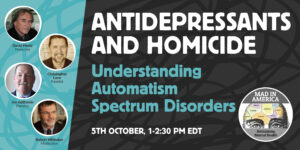
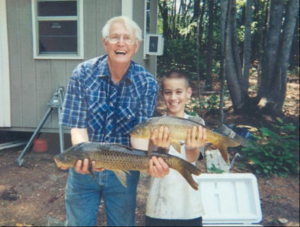
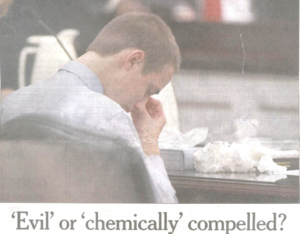
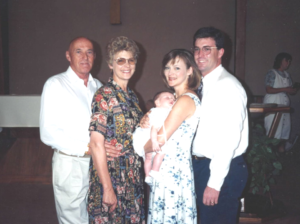
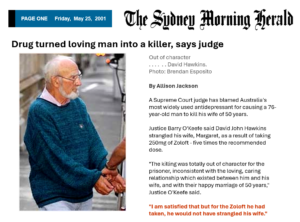




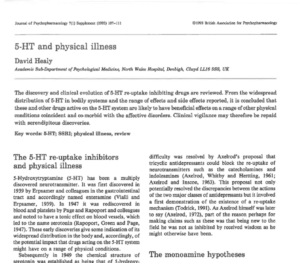
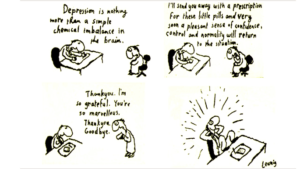


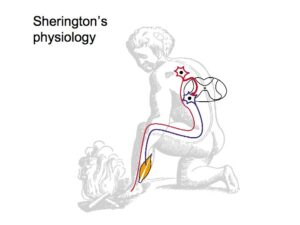
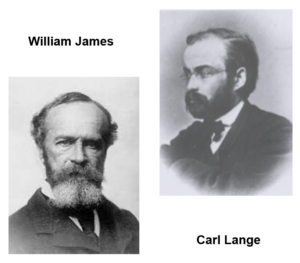
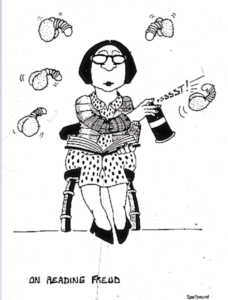
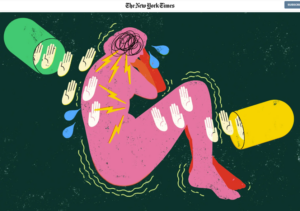
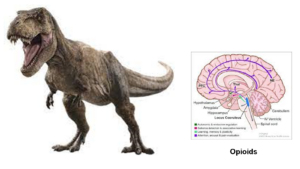

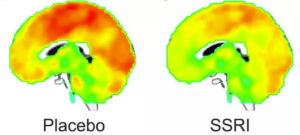

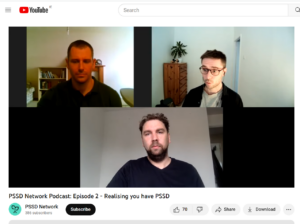
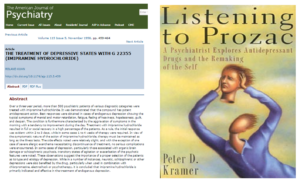
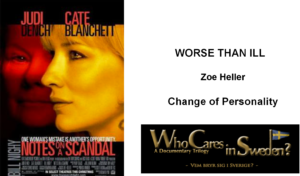


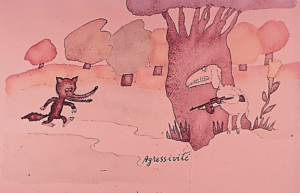

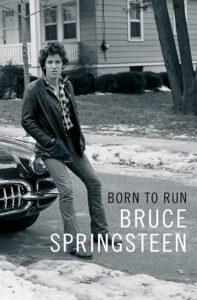

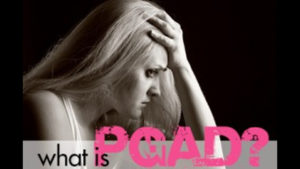
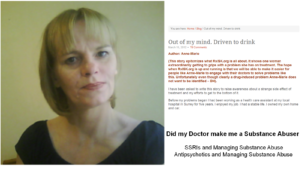
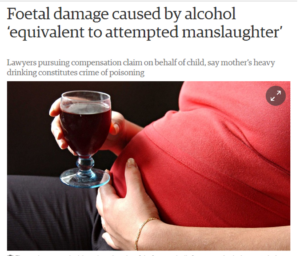
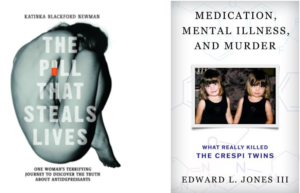
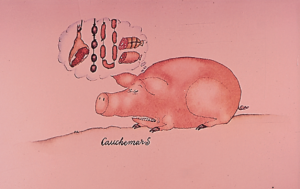
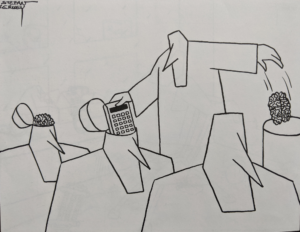



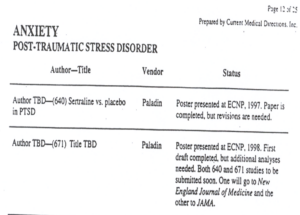
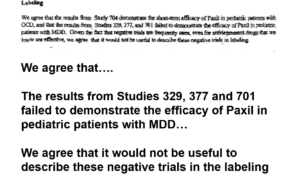
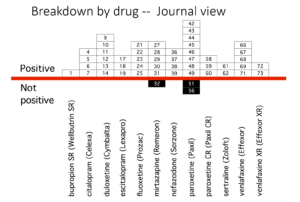
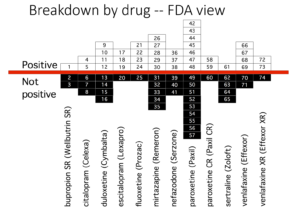
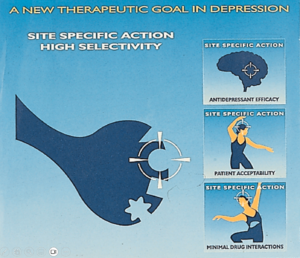

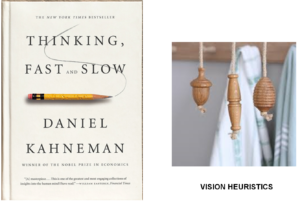
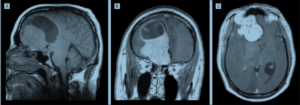
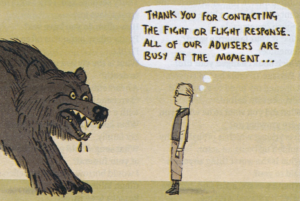

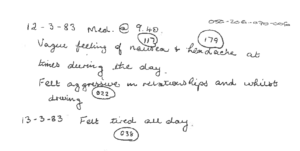
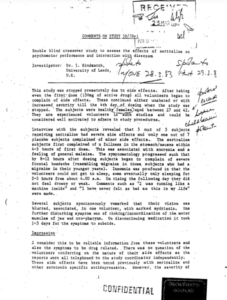


annie says
This ‘Challenging’ Webinar is a ‘Scorcher’ and a ‘Belter’.
And from this, tales of Homicide, can be worked back to Suicide and Violence to Self and Others.
So, if no Homicide case can be won, it follows that ‘attacks’ will go even further down the line.
“Evil” or “Chemically Compelled” or “Evil” or “Chemically Controlled” –
Compelled to Obey?
It is complicated. On the one hand we are almost compelled to obey our doctors, and then, it seems, we are compelled to obey our drugs. These do not fit together and with no support from our doctors, who seemingly do not understand what the drugs are doing, there is no reason to suppose that they will support when things go very wrong.
Most instances of suicide from drugs go undetected. But how they have tried, the Stephen O’Neill case come to mind.
If doctors are not on side from the very beginning, then how is a Jury of twelve rather innocent people plucked at random, ever going to support that dreadful woman who killed her darling children or that awful man or boy who recklessly killed his family or that random shooter who killed all those innocent bystanders.
The prosecution is harsh. Many a Judge has loaded the guilt with extremely nasty summing ups, as if things weren’t bad enough. The doctors, you cannot see them for dust.
This dire situation is one we should be talking about and the Challenges are there to be had.
The ‘Team Effort’ that went in to this Webinar vividly shows up how much is at stake and it was interesting that Christopher, Jim and Robert brought up theories of ‘Prescribing Faults from Doctors’, ‘Publicity Faults from the Media’ and the ‘Insanity’ Clause.
The Webinar was compelling, throwing out much-needed challenges, and it will be interesting to hear from the people who may be shocked to the people who have followed all the potential injustices going on right under our noses.
mary H. says
Indeed, Annie! I thought it was extremely well-gathered information clearly shared with all of us who watched it. To have it here now is empowering – we can go beyond the “telling others” about the webinar and the “truths” as we have witnessed them, we can now pinpoint their attention to it all on Rxisk.
Noone, to my mind, can dismiss the cases mentioned as being anything other than “caused by their prescribed drugs” – maybe it’s time now to include those who have lived to tell the tale, just as Katinka has done. I still feel that we could do with a chronicle of such cases, which could begin with cases where there were deaths, include accounts of “loss of potential self” and leading up to a final account, if there is such a thing, of a Primary Care doctor who actually informs a patient and close family of the signs of possible problems to look out for. I strongly believe that to move forward we have to get ALL workers together, in all their different roles so that we give the general public an united front on these horrific matters. At present, so many who are suffering, albeit not at the levels mentioned in the webinar, keep right away from their doctors. That gives doctors the go-ahead to come out with such sayings as ” I’ve not come across any such cases”. We should be shouting out that they ARE THERE, hiding in plain sight.
tim says
Thank you for another lecture which is so important, and such a gifted example of genuine EVIDENCE BASED MEDICINE that I simply didn’t want it to finish.
The ending is deeply worrying and profoundly challenging.
Progress has to be forthcoming as a result of truly academic presentations like this.
BUT: How do we get medical undergraduates, as well as Specialist Medical Trainees
(especially those undertaking Vocational Training in General Practice) to become aware that injudicious prescribing, and unquestioning acceptance of ghost written, data manipulated clinical trials, can result in both miscarriages of justice and/or avoidable patient harms/deaths?
Including discussion of this (and previous D.H. lectures) in medical training seminars would be invaluable, but so often CME (Continuing Medical Education) is sponsored by the pharmaceutical industry.
Is the inevitable outcome for our failure to address the scale and breadth of the sequelae to adverse drug reactions (ADRs) an inexorable loss of trust in the Medical Profession and in the Judiciary?
The potential for loss of credibility in medicine is exacerbated by the denial of reported ADRs such as PSSD.
I am unable to attribute the following (? paraphrased) quotation, but I believe it to be of relevance in this context:
“In a regulated profession, those who cause harm should be punished. Those who are killed, maimed and harmed must be compensated”.
As this situation stands currently; would those who comment here, and those inappropriately imprisoned, believe that we have an acceptable level of professional accountability?
Dr. David Healy says
Tim
Thanks for this. The MiA version of the talk with Q and A will hopefully be embedded soon. This drifted toward asking that you are asking here – is medicine the real problem here rather than pharma?
It would be great to get input on this from you and others. I will hopefully run a post on some of these points soon laying out possible scenarios for reform
We do seem to have a Medical Church that is ripe for Reform – drastic reform.
David
mary H. says
From the point of view of the “harmed” and their families, isn’t it time to forget about compensation and concentrate on ensuring that the future is brighter, clearer and safer for those who follow us – whether they be future patients or professionals in the Care System?
I say this as I take the view that NO AMOUNT OF COMPENSATION would be enough to fully cover the losses that so many of the harmed community have suffered. Getting a public acknowledgement and acceptance of the suffering would, obviously, be a must – and an assurance that in future ” lived experience” trumps ” the guidelines” every time. Also, and importantly, the word of “those who know the patient best” becomes the believed scenario far above the ” 10 minute observation” of the doctor’s appointment. Then, and only then, would come a change in attitude of doctors towards patients and of patients towards doctors in all areas of Care.
Dr. David Healy says
Mary
Compensation is not the issue – its a necessary marker of a real recognition of a disgraceful, shocking and intolerable states of affairs that should never have been let happen. Fluffy words are not enough. We are not just talking about the injured – we are talking about a lot of deaths – some of them beyond horrific.
David
mary H. says
Do you feel that finding some of the prescribers “guilty”, probably in the same way as street drug providers, would pacify those in the damaged community who are keen to push for compensation?
In my previous comment, I was not referring to you as regards talk of compensation but, in general, people who are suffering are looking for some sort of attack on prescribers and that – in our society as it stands – tends to be in monetary terms.
Apart from telling their stories, is there anything else that they (backed by us) could be doing to help strengthen your push for this “necessary marker of a real recognition of a disgraceful, shocking and intolerable states of affairs that should never have been let happen” ( quote from your comment)?
Dr. David Healy says
As per the note in reply to Tim. Will see if some ideas come to me in the next few days
D
Dr. David Healy says
Have had a rush of thoughts after inputs above from Mary Tim and others. These inputs link to the Petition Katinka, Yoko and others have been running and recently Katinka sent to Papyrus getting something she initially thought constructive back but I read as snarling condescension
Thank you for sending this. PAPYRUS does not sign petitions.
Whether or not we may share some of your concerns about antidepressants, and we do, I am not sure a petition is necessarily the most effective way to achieve your aims. It may be based on a false assumption. If the survey
is only based on Samaritans’ practice, then perhaps it is they who should be in your sights.
We do not share some of the views of some of those listed as experts in your group. There is an array of beliefs around best practice here. Our own policy is to promote appropriate and relevant NICE guidelines or equivalents, and to work to update these collaboratively when required to help prevent futures harm.
Perhaps a survey of helplines would be more fruitful as a first step. If the petition is to get helplines such as ours to ask about medication, we always do anyway as part of our safety planning with a caller who is or has been experiencing suicide ideation. Hence the petition would not necessarily serve to improve our practice.
It may be helpful to work with Helplines International and or https://www.helplines.org/helplines/.
This was the suggestion I made in discussion with The Ollie Foundation (one of your experts, copied) recently on this same issue.
Best wishes Ged GED FLYNN (he/him/his) Chief Executive Papyrus International
Folk on ‘our’ side who have been harmed are keenly aware of the need to recognize the harms that have been caused but just as much the need to prevent future harms – that might stem from an acknowledgement of harms done – there was mention of compensation but I’d imagine most on ‘our’ side would figure putting money and support into establishing the mechanism that causes the harms and finding a way to put this right would be seen by most as the best way forward.
The Papyrus email shows another side that ‘our’ side doesn’t see and can’t see how powerful it is. This side is formed by the parents of children who have committed suicide and who seen the answer as better access to meds and services and not less. On this side are a bunch of well heeled and well off gents and their partners and others who will have much more access to politicians than us. They likely accept some of us have been harmed but see us as a small group who are doing more harm than good by bleating on about the harms of meds,
Their’s is a much more acceptable message for most people than ‘ours’ – it seems to offer a reasonable and constructive way forward. It makes it easier to disregard – and even vilify – us as purveyors of misinformation. It is also much easier for the system to go along with this point of view – it requires no change, no acknowledgement that mistakes were made. It is always going to appeal more to the bureaucrats.
The stand-off risks ending up like Ukraine – Russia, Israel – Palestine.
In the final analysis however we end up with the situation outlined by Craig MacDonald above. A system built on a fake and often fraudulent academic literature cannot survive – from a business or moral point of view. It will end with societal collapse – as in escalating disability payments dished out to youngsters.
Access to counselling services is not the answer – these become a one-way track to more meds. We need to work together across divides to solve a set of problems we share in common
D
tim says
Mary H. I agree that NO AMOUNT OF COMPENSATION would adequately address those who have suffered PERMANENT FUNCTIONAL IMPAIRMENT as. a result of IATROGENIC DYSREGULATION.
As we all know: Lives have been lost.
Some have lost All of Life’s Opportunities. Their hope for finding a partner, having a family, getting a job for example.
Where is the GP to be found who will confirm and certify this level of prescription drug induced injury.?
Who can document the emotional suffering resulting from akathisia, repeatedly misdiagnosed as serious mental illness, leading to serial incarceration and to enforced toxic drugging alongside vicious, vindictive and vile abuse from those who staff these psychiatric detention units?
There are so many denied injuries and losses, and no state benefits available for our loved one; repeatedly Misdiagnosed and Maltreated.
No State Benefits means No State Pension.
Hence, when those aging parents who supported them have gone, there is real risk of financial destitution. Therefore any sensible compensation would afford some hope for future survival.
Valid and deserved compensation achieved via the evidence of a GENUINE EXPERT WITNESS would not only address potential future poverty and a lonely, isolated old age;
I believe that it would provide an effective and powerful motivation for prescribers to become aware and informed about the ADRs and HARMS that result from the inappropriate prescribing of dangerous drugs.
I also believe that where there has been genuine, avoidable medical error, then resultant, justifiable compensation acts as a powerful motivator for improved safety in prescribing, for accurate ADR diagnosis, and for safer patient care.
Perhaps even a start to the “Drastic Reform of a Medical Church Ripe for Reform”?
This does not negate our primary objective of striving to prevent the ADR induced avoidable tragedies for other families.
annie says
I can fully understand how you need to plan for your daughter’s future, if a time comes when you are unable to look after her. Later on, hopefully much later on, you can get your daughter assessed in a nursing home. You can start by paying privately, but if she has an assessment, and it is done professionally, this should keep her safe in a nursing home environment. When savings run out, a nursing home will then expect any property you own to be sold for fees. This will keep things going for a while and when all money has virtually dwindled to nothing, apart from the few thousand allowance, your daughter will be ensconced in the system. The Government are then obliged to fund future nursing home stays. It might the the same one or it might be a different one.
My mother was in a very expensive nursing home and we paid privately for her care there for six years. In the room next door to her was someone in her forties. She had brain damage, and ‘lacked capacity’. She was great fun, and would often sit with my mum, and chat. I really liked her. But the important thing here is that the state paid for her as she had no assets of her own.
The nursing home was split in to two halves. It was a fantastic old farmhouse in the country. Mum was in the new part, the people who couldn’t pay were in the old house. Mum was always worried about this, the money running out, and would she be sent to the ‘old part’.
It was purely in her head about the ‘old part’. There was absolutely no difference between those who sat around the communal areas from whichever part they slept.
Compensation would mean a lot to you for peace of mind for your daughter’s future, but, of course, for the recognition of a Drug Induced Injury.
I think the majority would like recognition.
In terms of monetary value, my position is quite different. It actually didn’t occur to me about compensation. When I tried to sue my doctor for ‘medical negligence’ it was because I was incensed that someone was making so many mistakes with Seroxat. The whole process was absurd when the lawyer had to give out the case to an ‘Expert GP’ who in her own words knew nothing about Seroxat. She had to revert to Wiki and the whole thing was a nonsense.
With the UK GSK litigation, it wasn’t for compensation for me. This could also be illustrated by lawyers trying to put a monetary value on our circumstance. It didn’t amount to very much. The lawyers would probably have received more than the litigant.
Like you, I was crying out for Justice. For Recognition. For a Value to our Lives.
Surely our lives are worth more than ‘monetary’; the pipe-dream lives on…
mary H. says
Point taken Tim, thanks for getting me to think through what I have said in my October 6th. comment. I suppose in these matters we each take a stand based on our “lived experience”. Since our children were in the UK Care system and with us in long-term foster care, their rights to benefits are totally different – it’s part of the system that brought them to us. I can’t see that anyone in the UK, having gone through these horrors, would be denied benefits – even if still living with the birth parents. I stand corrected, Tim, if that is not so. If not so, then that is possibly another necessary fight?
I also share your concern for their future – there is nothing in place for children such as ours unless they have learning difficulties and even then, nothing is guaranteed. To that end, we have plans in place to ensure that ours will always be able to live where they are now. In an ideal world, should we have to do that? No, but you do what your conscience feels is right don’t you.
That is where I base my hatred of compensation I guess. “We’ll pay out, it doesn’t come from our pockets anyway, it’ll get them off our backs” – end of story and on they go to repeat their disgusting ways to trap their next unsuspecting victim.
What I had not taken into consideration I guess, Tim, is that each case needs to be treated on its own merit.
annie says
A little something about ‘compensation’ –
A meeting was planned via telephone. Someone legal would phone us to talk. At precisely 10.15. I was ready, prepared. Ten thirty came and went. Then the phone called. There was a long shuffling of papers as one of the ‘legals’, out of several employed for the purpose, said he was not sure there was anything to talk about.
He side-tracked himself talking about his girlfirend being an artist. I got so annoyed at what I thought was an important and vital call, I told him exactly what had happened to me. Oh, right, he said, and ended the call.
Later on, I received a letter, outlining what I could possibly receive in the way of an award.
It was paltry. So I picked up the phone and called the number on the letter. The person who answered said she was in her car. I said that I thought the award was much too low considering what had happened to me and why. She listened and then said, it may be that we ‘have to bump you up a bit.’
The whole experience of being a litigant became painfully amateurish, and although hugely grateful that I was part of a case that could have reverberated around the world, the way in which it was handled, left a lot to be desired, having seen the way Paxil was handled in the US by New York Law Firm, Baum Hedlund.
From the word go, all remaining litigants, 100 or so, from the huge numbers we started with, were determined and resolute, but it became, in the end, undignified and unfitting.
This was our third legal firm for UK GSK- Seroxat, Paroxetine – Litigation, and our last…
annie says
is medicine the real problem here rather than pharma?
Experts in new warning over huge rise in prescriptions
https://www.dailymail.co.uk/news/article-13927799/A-QUARTER-Scots-adults-antidepressant-drugs-country-gripped-epidemic-mental-health-problems.html
By Craig Mcdonald For The Scottish Mail On Sunday
Published: 20:48, 5 October 2024 | Updated: 20:49, 5 October 2024
A quarter of all adults in Scotland are now being prescribed antidepressant drugs as the country is gripped by an unprecedented ‘epidemic’ in mental health problems.
The number of people taking the pills also rose last year at an alarming rate, with more than 50 new patient cases prescribed every single day.
The SNP pledged to halt the annual increases when it came to power in 2007. However, numbers have instead rocketed, reaching more than 600,000 by 2010.
It can now be revealed that the number of people aged 18 and over prescribed such medicines reached 1,040,000 last month, a figure which represents more than 23 per cent of the adult population.
Meanwhile, adding in the number of people now being prescribed drugs from one of five groupings broadly associated with mental health, the staggering figure rises to a third of all adults.
This includes almost 200,000 adults being given benzodiazepines, around the same number given gabapentinoids, 825,000 given opiod pain medications and 125,000 given medication known as z-drugs, which includes drugs such as zopiclone and zolpidem. The drugs are used to treat conditions including anxiety, depression and sleep disorders.
The figures, obtained by this newspaper from Public Health Scotland, relate to a snapshot day last month and exclude cancer patients.
Medical opinion, even among psychiatrists, remains divided on the use of such drugs, with many backing their effectiveness.
However, Dr David Healy, a professor of psychiatry, and one of the world’s leading experts on the effects of antidepressants, said: ‘As can be seen, the figures for antidepressant use have been increasing even more rapidly than before, with more people being put on them. These are mainly younger people, and we are seeing results, in some cases, in increased disability benefit claims.
‘Far from making the population healthier, these drugs are making us sicker not just because of the effects of the drugs but because, to get them, we have to be given a medical condition, and this giving may be harmful in its own right.’
Nick Ward, chief executive of Scottish charity Change Mental Health, said: ‘For decades, we have been told that antidepressants are the answer to depression and mental health challenges, but they aren’t.
CASE STUDY: ‘I wonder if and when I can come off pills’
Olivia said she began to feel ‘overwhelmed’ a few years ago.
The 27-year-old from Edinburgh said: ‘From talking to friends, I knew I wasn’t alone. Many of my friends felt the same. Your head swirls round with stress and at times there’s a tight feeling in your chest like it’s difficult to breathe.
‘It’s stress piling on top of stress. Then it starts to have an effect on your sleep and things spiral out of control. I would wake up panicking. I went to see my GP as friends told me they had done the same and it had helped. He was sympathetic and talked through various options, such as exercise or therapy.
‘He mentioned medication and said that was a common thing for him to prescribe nowadays.’
Olivia added: ‘Initially I was reluctant but something needed to change. He talked me through the effects, and also the side effects, which he warned could be unpleasant. But things had got to the stage where I needed to do something.
‘I figured that anything to try to get back on top of things was worth it. The doctor had no hesitation in prescribing antidepressants and that’s something I think about now.
‘That was several years ago. While I haven’t regretted it, I now wonder if and when I will safely come off the pills.
‘Modern life is stressful. Social media never stops. People are in contact with each other in real time, all the time.’
Olivia has now started therapy and peer support. ‘It has changed how I look at things and helped get everything in perspective a lot better,’ she said. ‘I still take the medication but I don’t want to take it forever.
‘Peer support has helped me realise I am not alone and many people have had, and are having, a similar experience to me.’
‘We have overly relied on a medical model of mental health, viewing problems as an illness that, just like an infection, the right drugs can cure. For the majority of people, this isn’t true.
‘We know that what causes mental health issues are generally bad things that have happened or are happening in our lives.
‘Antidepressants are cheap and plentiful and have been readily promoted by big drugs companies. They give time-stretched GPs a solution.
‘The real “solutions” are complex and expensive, and involve providing people with therapy so they can talk to someone, supporting someone to feel part of their community, and helping people rediscover the “real” them.’
Meanwhile, Dr Jane Morris, chair of the Royal College of Psychiatrists in Scotland said: ‘Antidepressants are an important treatment option that we know to be effective.
‘We would like to think public education and awareness of the treatability of mental illness means that more people are coming forward.
‘But we would not be surprised to find that the increased prescribing may now reflect a rise in Scotland’s need for mental health treatment, both in medication and psychological therapies.
‘Waiting lists for assessment and treatment are longer than ever. We also have a workforce crisis in psychiatry and that’s why we’re calling on the Scottish Government to honour its promise to invest 10% of its health budget in mental health.’
Scottish Conservative shadow health secretary Dr Sandesh Gulhane MSP, who is also a GP, said: ‘There is a mental health epidemic on the SNP’s watch and they still don’t have a plan to address it.
‘The combination of long waiting times for counselling and an unacceptable lack of community services often leaves health professionals with little choice other than to prescribe antidepressants, despite the SNP’s pledge to halt increases in usage.
‘Common sense dictates that mental health should a top priority for the SNP, but they have shamefully cut nearly £20 million from the budget.
‘It is time for the Health Minister to back our bold vision to address this crisis, which includes spending 10% of the health budget on mental health.’
Mental Wellbeing Minister Maree Todd said: ‘People feel more able to come forward and talk about their mental health which is a welcome sign that stigma is decreasing – the latest data shows.
‘Decisions about the appropriateness of antidepressants are made by clinicians in discussion with the individual about what matters to them, and with reference to their medical history.’
‘ in real time, all the time.’ – she said, unknowingly giving away of what to address…
Kristina Kaiser says
What an excellent piece here–in-depth info succinctly shared about a topic medical professionals, pharma, drug regulators and other government systems refuse to address, let alone accept, despite that there’s evidence they likely suspect and/or absolutely know the truth.
Their victims, the drug consumers and those who die by such medication-induced violence, certainly didn’t die by their own hand.
annie says
Challenging the Status Quo
By
Maria Bradshaw
January 29, 2014
https://www.madinamerica.com/2014/01/challenging-status-quo/
Eighteen days after Shane’s death, Psychiatrist Dr Michael Corry publicly stated his view that he could not have done what he did had he not been on Citalopram. Initially Leonie admits to thinking he was mad. How could medicine prescribed by a doctor have anything to do with what had happened to her son? As she began to research however, she discovered that the evidence that the SSRI had caused Shane to become homicidal and suicidal was far more compelling than the opinion offered publicly by a Jesuit Priest on the day of Shane’s funeral that he was ‘pure evil’ – something that either no one had noticed, or a character flaw that had taken 22 years to emerge.
Predictably, following Dr Corry’s statement and the news that Prof David Healy was to give evidence at Shane’s inquest, the Irish College of Psychiatry went into a frenzy…
Maria Bradshaw
DelusionNZ: Maria Bradshaw lost her only child to SSRI induced suicide in 2008. Co-founder and CEO of CASPER (Community Action on Suicide Prevention Education & Research), Maria promotes a social model of suicide prevention focused on strengthening community cohesion, addressing the social drivers of suicide and providing communities with the knowledge and tools required to reclaim suicide prevention from mental health professionals. Maria has an MBA from Auckland University and particular interests in sociological and indigenous models of suicide prevention, prescription drug induced suicide, pharmacovigilance and alternatives to psychiatric interventions for emotional distress. Maria has researched and written a number of papers challenging the medical model of suicide prevention.
“Informed Consent — What’s the problem? A Mother’s Search for Answers Following the Death of her Son.” – a talk by Leonie Fennell
Hearts and Minds…
annie says
What do we ‘share in common’?
I don’t see the Samaritans helping out, or the youth helping out, or the benefit systems helping out, or the spiralling rate of antidepressant prescriptions helping out, or the doctors helping out.
Back to the Webinar, a serious shot across the beams; this must give cause to really helping out. Draw them in, across the divides, information that should give real cause for concern, and information that is not normally available to an unsuspecting public – but do they get to see it?
What do we ‘share in common’?
Anon says
>> We do not share some of the views of some of those listed as experts in your group. There is an array of beliefs around best practice here. Our own policy is to promote appropriate and relevant NICE guidelines or equivalents, and to work to update these collaboratively when required to help prevent futures harm.
Ged GED FLYNN
This is the belief of his religion. I don’t agree at all.
I am pleased to see him to discuss directly how their appropriate and relevant guideline killed my son.
It would be great if Kathinka can coordinate that.
Today we received another message from a parent whose very young daughter was prescribed paroxetine.
The parents read multiple articles about Romain and they were encouraged to oppose her prescription and weaned her off the drug themselves. After that they finally discovered how hell it was during the medication.
I cannot tell you much because they want to be anonymous.
It’s not the first time to hear such stories. There does not exist such a story even a bit in their appropriate relevant guideline.
tim says
Anon: – When I read the words which you have quoted in your first paragraph above I was discomforted.
I searched the NICE GUIDELINES for Management of AKATHISIA and found nothing.
mary H. says
With reference to your 7/10/24 comment – “Access to counselling services is not the answer – these become a one-way track to more meds. We need to work together across divides to solve a set of problems we share in common”- I totally agree, especially that we all need to work together in this cause. As far as counselling services are concerned, if we could class peer-support in there and get people to believe in the word of those ‘harmed but in recovery’, then I think we would stand a chance of catching some people before they venture for that first prescription or, at least, went to the prescriber with real previous knowledge of care needed when using these psychotropic drugs.
This may only be a small step but catching even one person who might blindly take a tablet with vicious consequences could well be one less story to add to the sad cases of which we read far too often.
Dr. David Healy says
M
A nice idea but won’t work. I once thought peer support was a good idea but it has become accredited and accredited peer supporters have to endorse Guidelines and never suggest your drug could be causing a problem.
There is a logic to this – we want peer supporters to do more good than harm and that means following the scientific literature and not their own personal crack-pot ideas. This would make sense in a sensible universe and its what folk like Ged appeal to and will seem not just to be sensible to appeal to but only right and proper and Yes we need things like Antidepressant Risks etc closed down.
David
David
Johanna says
“Peer support” can mean many things. Yes,, it can mean salaried employees of established hospitals and clinics who qualify as having “lived experience” — but are basically under the thumb of their employers and unable to offer an alternative. You’re right to warn that not much help can be expected from “accredited peer support specialists” of this type.
But it can also mean something very different — for instance, the survivors’ group that Mary and her family have led in North Wales, the one led by Laurie in the USA (Ohio), and the many groups that have sprung up online. They’re not the only answer, and they are far from perfect. But they can offer crucial help. So can “outsider” peer counselors like Angie Peacock who has contributed her ideas to this blog, and others like her.
From time to time, even some health care professionals can be drawn into this work. (If this were not true, why would RxISK constantly appeal to our readers to send in names of clinicians that can be trusted, so that we can build up a network?)
We are facing powerful opponents that often appear to have “scientific consensus” and public opinion locked up tight. But that is no reason to shut down or denigrate those who are trying to do something–even if we believe their efforts will end in a blind alley.
I might not be alive at this point, if not for such efforts. Including those of folks like yourself who have engaged in other “hopeless” efforts such as writing books. And I’m glad to be alive and still fighting.
Johanna says
I think we might be stronger if we avoided automatically demonizing those who advance ideas we don’t think will work. That would include people who try to reason based on biological plausibility about what might work – and those who continue to believe that receptors exist in the brain that are affected by SSRI’s in relevant ways. (That would include me; I readily accept that the sensory/peripheral effects of SSRI’s have been underestimated, but I’m not sure I agree that their adverse effects have “nothing to do with receptors in the brain.”)
In your last post you warned:
“I get nervous when people start drawing boxes about what SSRIs have caused at various receptors. These boxologists then claim to have worked out logically something that is almost certain to help. It rarely does, and boxology of this sort has led to the deaths of people with PSSD.”
Later on in the post, you commented that your own conjectures about Carbonic Anhydrase Inhibitors as akathisia antidotes ran the risk of “sounding like I’m indulging in the Boxology and Biobabble I condemned above.” I thought this observation was spot-on.
I also noted that some of the antidotes you named (benzodiazepines) have been widely prescribed to folks who felt restless or agitated on their anti-depressants. Both James Holmes and Marilyn Lemak ended up on precisely that combo. To say it did them no good is putting it mildly.
Does that mean your own opinions should likewise be condemned? No! Debated, disputed, sure—but not condemned with epithets like “boxology” or “biobabble” (which have always been Fighting Words on this blog, reserved for soulless bureacrats).
If such charges are made, the Enemie we are referring to should at least be identified. We should also identify the specific remedies that you charge have “led to the deaths” of people who tried them. Hell, at least that way they could be avoided by the living.
You have often cited Anne-Marie’s initiative in figuring out why citalopram had caused her destructive cravings for alcohol. Re-reading her 2012 post, I confirmed that her insight was based on painstakingly combing through research papers to discover the role of the S3 serotonin receptor (activated by some antidepressants but not others). She then “worked out logically” that another drug, mirtazapine, would not cause this problem.
Surely a classic case of Receptor Based Boxology? It just goes to show: there are many sources of knowledge. Some are more compelling than others, but none should be regarded as corrupt or forbidden. All can be put to the test on some level. Otherwise, we would never have listened to Anne-Marie.
Dr. David Healy says
I think you are missing a point behind Anne-Marie. She knew the SSRI was causing the alcoholism before she ever went near any boxes. Then she tested the effect of mirtazapine – and only when it was clear it made a difference did she know she was on to something. Her knowledge was not based on boxes – it was based on lived experience – which is where my point behind Antidotes came from – having detected your skepticism about the possibility of antidotes.
People with PSSD have died chasing boxology
D
Dr. David Healy says
I haven’t spelt it out properly. When peer support became a fashionable word a decade ago there was no talk of accreditation. Now it is not possible to designate yourself as a peer support without accreditation – and you can see how it happens. Just as you noted with the National Suicide Prevention Plan in the US there is no mention of ADs causing suicide – the system is geared to getting you on meds.
Pharma I imagine support trauma informed care services knowing that counsellors these days are a rapid conduit to meds.
We can still have friends and family but even they will find it hard to go counter to the Guidelines and the doctors.
D
annie says
We should talk about ‘Gutsy’ people.
I was just an ordinary mortal, but I really did try to sue The Surgery.
All the while my doctor was writing terrible things about me, my disastrous relationship choice, my isolation in the countryside, my feeble state-of-mind, etc. and then her notes in my medical records said things like: Dog died. I think she needs HRT. A paragraph about blades and attacks on myself.
She thought I was a nothing. She thought she was above reproach.
A participant in the GSK litigation which seemed endless, was a high priority for me. This could have ended whatever falsehoods GSK liked to imply.
So, I herald, all the ‘Gutsy’ people, who go out of their way, to pursue the end goal. Whatever way they choose to do it.
And if it fails, you cannot dispute all the ‘Gutsy’ people, who put everything that has been said, totally and rightly on the map.
The Map has it, for as long as we live and breathe.
Harriet Vogt says
I understand the battle worn despondency you and others must feel after decades of campaigning – in the face of a system which seems as corrupt as ever it was: https://www.reuters.com/legal/us-professor-charged-with-manipulating-data-alzheimers-drug-trial-2024-06-28/
Rather than reading Papyrus’s response as ‘snarling condescension’. I think it’s indicative of the way ‘The System’ works. And the way campaigning can be usefully considered and its effectiveness strategised.
This simple – perhaps simple-minded – theory looks clearest as a diagram, but let me try and put it into words. I think there are two types of pressure for change that can be brought to bear on bureaucratic systems:
1.
EMOTIVE PRESSURE which doesn’t actively EFFECT change, but creates or AFFECTS a climate susceptible to change – dramatizing uncertainty, highlighting risk, challenging embedded beliefs etc. Media coverage of harms and petitions are classic examples of EMOTIVE PRESSURE.
As I’ve said before, Katinka’s and Yoko’s petition ideas were highly unlikely to be embraced by suicide services staffed by lay volunteers, for legal reasons, apart from anything else. But their petitions are powerful publicity ideas and examples of EMOTIVE PRESSURE for change.
2.
INSTRUMENTAL PRESSURE which does EFFECT change – but the pace is likely to be ‘glacial’, to nick one of the more potent bits of language from the Cumberlege Report. I know you have a dim view of JC herself for good reasons, but the report I think is ferociously good. This is the ‘SCIENTIFIC EVIDENCE’, what ‘The System’ believes is its bedrock.
Ofc this is fundamentally flawed by the ‘ghost written’ corruption in the evidence base – BUT, ‘The System’ opens its mind to this type of information, viz. a classic being the paper by John Read and James Davies on AD withdrawal incidence and severity https://pubmed.ncbi.nlm.nih.gov/30292574/. Even though the juggling ******* (expletive deleted) are still trying to minimise the incidence and severity estimates,-too late, guys, withdrawal is already embedded in the guidance.
I think peer support fits into the INSTRUMENTAL frame more than the emotive one- because it is a structural challenge to medical treatment and authority.
AD withdrawal is a paradigm of how EMOTIVE and INSTRUMENTAL pressures fuse to drive change – emotively – deafening howls from harmed patients across social media, Marion and Stevie’s Scottish and Welsh petitions to which you were fundamental etc., instrumentally proven by the evidence of the Read/Davies paper https://pubmed.ncbi.nlm.nih.gov/30292574/, PHE research follow up, deep shaming notably by Adele Framer’s Surivving ADs and clearly superior knowledge of withdrawal experience. Until Wendy Burn et al could no longer hold the ‘discontinuation is mild and short-lived’ line.
The other powerful INSTRUMENTAL dimension is ,of course, health economics, viz the current unpicking of polypharmacy – and I totally agree with you re paying victims and/or families of victims huge compensation. ’The System’ is extremely unhappy about its medical negligence bill.
The breakthrough PSSD campaign, largely driven by you, has worked in much the same way as AD withdrawal. EMOTIVE campaigning compounded by a lot of instrumental work from you and the Rxisk team supported by other principled scientists.
You’re bound to know – but the GREAT NEWS today, posted by Mark H on X, tagging you, which you may not yet have seen since you don’t hang around X like I do:
‘Post-SSRI sexual dysfunction (PSSD) has been added to the SNOMED diagnostic codes internationally so that it can now be recorded by doctors as a diagnosis. Hopefully this will help the system to determine the full extent of the issue.’
CODA
You questioned Mary’s unaccredited support group. I got a bit lost tbh – as usual I’m writing in the middle of the night – 1.33 a.m. But, not only does Mary’s expertise and dedication show up the failures of ‘The System’, she has embedded herself as an expert in a group of people officially recognised by it, LEAP4PDD – and has an acronym to prove it.
On a personal note, thank you, Mary, for being such a wise and loving support when a couple of us concerned amateurs were trying to keep a PSSD sufferer from taking his own life. He is still amongst us and, for now, seems to be in a better place.
Dr. David Healy says
I’m not questioning Mary’s group at all – I think she has been marvellous. The astonishing thing though is that groups like this are not picked up and built on – why not? Because the system would have to change them and accredit them – and cant accredit what they do.
Mary has been amazing to keep things going this long – but she longs for a chance to make a difference, to see real change happen and is not seeing it at present and there is no sign that the brush fire she lit years back is spreading. The astonishing thing is there is no demand for what she does. Groups like hers spring up and fade away.
Re Snomed – I hope I’m wrong but I think its irrelevant For Snomed codes to be used doctors and others have to put the diagnosis into medical records.
There are Snomed codes for suicide but not for drug induced suicide. Snomed makes absolutely no contribution to the system developing any sense that AD induced suicidality might be a significant problem – 20 years after Black Box Warnings that put the possibility of coding for this in medical records. Doctors advised by lawyers will rarely if ever put drug induced suicidality into a medical record and if they don’t the coders won’t code it.
Tell me why PSSD won’t be the same – especially as there is even less sense among docs that the drugs cause the problem?
D
Harriet Vogt says
Allow my terminal optimism for just a few more moments – the whole point about the LEAP4PDD group on which Mary is a panel member, is that her expertise is being harnessed, just as it is, not distorted by some existing ‘System’ idiocy. There is a vaccuum where withdrawal understanding should be. Last I heard – ages ago – this group of people who actually know what they’re doing – including Melanie Davis and Sarah Tilley – were advising 25% of the UK’s Integrated Care Boards on withdrawal.
https://leap4pdd.org/about_us/
And, to continue in optimistic vein, just for a few more seconds , the SNOMD code is surely by definition recognising the iatrogenic nature of PSSD. That struck me as remarkable progress, given that not long ago PSSD was being totally denied by the system and dismissed as ‘depression’, FND etc. Even the other day, Awais Aftab – who had earlier supported PSSD community,- wrote some narrow thinking drivel for the Carlat Report to the effect that iatrognic causation was still not proven by research. This is a fundamental problem of a system based on scientism, an old fashioned epistemic hierarchy. This needs addressing – and your and Dee’s paper started to do that.
Realism. All this is dependent on prescribers listening, learning and doing the right thing. Their track record gives us no reason for optimism. AI might work better.
Dr. David Healy says
First Optimism is not Realistic and not a Strategy. I will get back on possible strategies in a post.
Second Mary herself will tell you – nothing is happening in Wales. She is doing heroic things but the surprise is the system has not picked this up and supported it or helped increase awareness more generally
D
Harriet Vogt says
Perhaps I have a different, generally unrealistic perspective – because things are happening in Sussex, showing signs of being in the vanguard. Mark has actually been brought in to do some deprescribing education. Ofc no guarantees prescribers will listen and learn – but a bit of progress.
Agree, optimism is not a strategy – but it’s a driver. Happy to hear you’re working on possible strategies. Giving up is not an option for any of us. I sense a slight tremor of a tipping point – may just be my local area.
mary H. says
I feel the need to tackle a few points – am putting all here although some may fit better elsewhere.
If we see ourselves as “purveyors of misinformation” then that is where we’ll stay. Our job must be to ensure that we are more difficult to disregard – and that won’t happen if we start to sound hopeless and lost.
The system is as the system is. The “fraudulent academic literature”, you say, cannot survive – from a business or moral point of view. We see our group as part of the “moral” responsibility in this case.
‘Decisions about the appropriateness of antidepressants are made by clinicians in discussion with the individual about what matters to them, and with reference to their medical history.’ is a quote added by Annie – if this were the case, our group would not be needed for sure. We don’t touch our members’ Medication Reduction Plans etc. but hear plenty about the lack of communication between them and their doctors. Another quote from Annie states -“‘People feel more able to come forward and talk about their mental health which is a welcome sign that stigma is decreasing” – true, as long as people are there to listen which we see as part of our role. I agree with Harriet that peer support fits into the “instrumental” frame of pressure which “does effect change” but not in any quick way for sure!
Groups, ours included, do not count growth by attendance numbers alone. We have 12 on our current mailing lists, 5 0r 6 of which regularly attend. The new Tuesday group has 47 on their mailing list with between 8 and 10 meeting weekly. Our group, being David’s baby, is not a drop-in to share problems only, we view it also as a stepping-stone to supporting Rxisk. To this end, encouraging group oarticipation, we had T shirts made a couple of years ago, for Awareness Day and raised almost £300 to the rxisk Research Fund from that.
David, you say that you do not question our group and I know that for sure. You know how we came about – and why. We can feel your frustration – having a baby with “growth issues”” should concern us all! However, we ARE growing if we look away from our attendance numbers. How do we, Shane and I view what we do? Are we moving forward or in a stagnant pool? We are definitely moving forward. Next month we have a person who has quite regularly used all our groups and has suffered severely for a number of years who now feels herself to be in a positive frame of mind and being a speaker for us. We hope that will be encouraging for the present members.
Since we are part of our local communities, we also run a Facebook group called “Feeling Blue?” which has over 140 members. This group is NOT about prescribed medications as such but we do post relevant Rxisk posts there too.
You state, David, that I would say that there is nothing going on in North Wales – we certainly have noone in our withdrawal group from N Wales but the Facebook group have plenty. We like to think that living in such a beautiful place keeps many away from AD prescriptions of course! I’m sure that’s not true but we don’t find them. Doctors won’t support us, of course, and you seem to think that is because we do not have accredited status. Well, we have a NHS prescribed medication support service here in North east Wales – doctors show a reluctance to use that service too, so I’m not sure where the problem lies.
To finish, I should say that my place on LEAP4PDD has nothing to do with me in any special way – I am there on behalf of those who struggle with AD withdrawal. Thank you to Harriet for having my back in some of your comments – David knows that my skin is as tough as an elephant so no worries there! As for supporting your twitter friend – anyone in the state that he is in can rely on an email from me!
Sorry for the length of this – so much needed a mention!
Harriet Vogt says
Some late night, amateur legal considerations.
‘If you can’t get a Fair Trial you can’t be getting Good Care.’ That’s the heart of it.
Thanks, in significant part to your own leading edge work, such as: https://journals.plos.org/plosmedicine/article/info:doi/10.1371/journal.pmed.0030372 – the risks of agitation and hostility, potential precursors to involuntarily intoxicated acts of violence, are embedded in the UK guidance, US black box warnings (especially in relation to the young), viz:
‘The child or young person should be closely monitored for the appearance of suicidal behaviour, self harm, or hostility, particularly at the beginning of treatment’.
https://cks.nice.org.uk/topics/depression-in-children/prescribing-information/fluoxetine/
You ask – ‘Juries are US and we want to hold someone responsible. Do we hold the person, their doctor, regulators or companies responsible? We worry about re-offending. In the case of a suicide – there will be no reoffending.’
As I do consistently, I point the finger at prescribers and the legal and ethical obligation of informed consent. Risks are in the guidance and in the PILs. Granted there are the other 5 or so elements that legal cases of involuntary intoxication need to satisfy- https://journals.sagepub.com/doi/10.1177/0022018315579133, but
– forseeablity, including warnings of risk, is pivotal:
‘A key concept central to several of these pitfalls is that of foreseeability. An expert may be particularly helpful in addressing this concept by reviewing the defendant’s previous behavior, his experience with the medication, known warnings about the medication, and any discussion the defendant had with a physician about the potential risks of the medication.’https://jaapl.org/content/43/3/321
Ditto, the conclusion of Fazel et al’s analysis of the Swedish drug vs crime registers:
‘From a public health perspective, this worsening of overall morbidity and mortality might argue against restrictions on the primary care prescribing of SSRIs as long as potential risks are disclosed.”
https://www.ox.ac.uk/news/2015-09-15-study-explores-association-between-ssri-use-and-violent-crime
The more I think about it, the more I believe, as many in the prescribed harm community have advocated for years, monster campaigning for detailed, complete informed consent is a priority. A signed contract between prescribers and patients. The convention of listing common ‘side effects’ first can be exceptionally misleading for patients, especially when the life threatening ADEs of violence directed at self or others are diminished as ‘rare’.
Dr. David Healy says
I don’t agree at all. Informed consent today means being told about the May Contain Nuts Labels. Informed Consent based on What – the what according to the system can only be the evidence from the very best sources – RCTs.
These issues all came up on RxISK posts 3 years ago – Sanctuary Trauma – Invisible Doctors – Strangers in the Room – Black Robe White Coat
Worth revisiting
D
Harriet Vogt says
RCTs are obviously marketing. But, the risks outlined in PILs seem more like legal defence documents, covering real dangers. This is what I was imagining. So, for SSRIs, informed consent for patients would have to be holistic and include all the sensory risks including PSSD, – as well as suicidality.
OK, now I’m brought down by reality. But, without some naive optimism, there is no hope.
Dr. David Healy says
Nobody pays any heed to PILS – doctors certainly dont and PILS avoid mentioning things likely to deter people from seeking treatment
D
Harriet Vogt says
I fully reccognise that I am being naïve and stupid to hope/wish/intend that patients should be given informed consent based on ALL the risks that are covered in the PILs – but they are there, viz: fluoxetine:
• change in taste
• dizziness
• uncontrollable shaking movements
• blurred vision
• rapid and irregular heartbeat sensations
• flushing
• yawning
• indigestion, vomiting
• dry mouth
• rash, urticaria, itching
• excessive sweating
• joint pain
• passing urine more frequently
• unexplained vaginal bleeding
• feeling shaky or chills
Uncommon (may affect up to 1 in 100 people)
• feeling detached from yourself
• strange thinking
• abnormally high mood
• sexual problems, including orgasm problems, occasionally persisting after treatment discontinuation
• teeth grinding
• muscle twitching, involuntary movements or problems with balance or co-ordination
• enlarged (dilated) pupils
• low blood pressure
• shortness of breath
• difficulty swallowing
• hair loss
• increased tendency to bruising
• cold sweat
• difficulty passing urine
• feeling hot or cold
• thoughts of suicide or harming yourself
• memory impairment
• ringing in the ears
• nose bleeds
• unexplained bruising or bleeding
• abnormal liver test results
Rare (may affect up to 1 in 1,000 people)
• low levels of salt in the blood
• untypical wild behaviour
• hallucinations
• agitation
• panic attacks
• fits
• vasculitis (inflammation of a blood vessel)
• rapid swelling of the tissues around the neck, face, mouth and/or throat
• pain in the tube that takes food or water to your stomach
• sensitivity to sunlight
• producing breast milk
• reduction in blood platelets, which increases risk of bleeding or bruising
• reduction in white blood cell count
• confusion
• stuttering
• aggression
• hepatitis
• lung problems
• muscle pain
• problems urinating.
https://www.medicines.org.uk/emc/files/pil.11909.pdf
Dr. David Healy says
And up to roughly 2000 this meant we have checked people out who have reported these and we agree our drug has caused them.
As of sometime after that – maybe around 2005 – it began to mean people have reported these things to us and we have handed on the reports to regulators who have not said our drug causes any of them. How could they – there are no controlled trials showing our drug causes them.
So they are listed there – make what you want of them
D
annie says
It’s called ‘Learned Helplessness’
Doctors don’t spend their entire lives scrutinising Guidelines. My doctor looked up her BNF book to find some drugs to combat ‘agitation’. Far from realising that Seroxat was the culprit, on she went giving me three hardline benzodiazepines and then quite a truckload of beta-blockers.
So, the ‘Informed’ bit is a highway to nowhere.
Informed Consent has become somewhat of a mantra and is a complete impossibility.
You will never fill a doctor’s head with ‘informed’ – chasing rainbows
Your doctor will offer you all sorts of stuff – Covid boosters, Shingles vacs, RSV vacs, etc. etc.
Do you think for one moment your doctor is ‘informed’
Most people have seen the doctors reactions to RxISK reports and Dr. Google, and look where that got them – impaled …
Harriet Vogt says
Re reality of ADEs listed in PILs. Hear you.
But objective is not legal claims after the event, but deterrent before. Patients already have the risk shopping list in their hands, but never read it. Forcing attention to detail – stupid probably. Impossible likely. But- why not? Prescribers certainly need their noses rubbed in all this. They have no idea. Idealism-I know- not a strategy . Will leave you in peace now to develop realistic future ones.
annie says
In Posterity –
Tuesday, October 08, 2024
Closing One Chapter, Opening Another: A Farewell to the Blog and a New Beginning
https://fiddaman.blogspot.com/2024/10/closing-one-chapter-opening-another.html
“ I want to take a moment to reflect on all that has been accomplished here. Together, we’ve shone a light on the very real and often hidden dangers of antidepressants. Through this platform, we’ve challenged the narrative that these drugs are harmless or even helpful for everyone. We’ve dug deep into the data, listened to real people’s experiences, and called for accountability where it was sorely lacking. The countless conversations sparked here, the stories you’ve shared with me, and the sense of community we’ve built have far exceeded anything I ever imagined when I started writing all those years ago.
Having my book, “The Evidence, However, is Clear, the Seroxat Scandal”, published too was a great achievement for me, it helped spread the word and, as I understand, helped many people understand the dangers of Seroxat and other SSRIs.
It’s still a rich source of information for many new to this dark world of antidepressant regulation and safety.”
A Major Player, Tenacity and Wit, Sorrow and Laughs
I want to say thank you. Thank you, Bob.
Harriet Vogt says
Marion has just posted this on X. Another life sacrificed to a system which is supposed to keep patients safe – but seems to be perversely designed to do just the opposite:
(DH) told Good Health: ‘There is accumulating evidence that ¬doxycycline can cause problems. I don’t know if the EMA will say we’ve got to mention this on the drug label. But even if it does, it won’t make a huge difference; doctors won’t change the way they practise as a result.
‘They hand this drug out for acne, chest infections or malaria – and they never warn patients.
‘I don’t think doxycycline should be banned, but doctors should be saying to patients ‘if you feel psychologically unwell at any time on the drug then stop taking it immediately’.
https://www.dailymail.co.uk/health/article-13933829/Darren-antibiotic-used-acne-infections-2-weeks-later-dead.html?ito=native_share_article-top
I checked and this warning is still not in the drug label, a patient safety alert Rxisk voiced over a decade ago. So fat lot of good my rather desperate obsession with informed consent would have been. Yes, after a bit of sleep, I understand why you’re so dismissive – even loftily dismissive! – of my consent sticking plaster, though I’d urge you not to dismiss the legal ramifications out of hand.
Ofc you’re also right to dismiss regulators as bureaucrats checking marketing labels. Compare: Recommendation 6 of ‘Cumberlege’ – The MHRA needs substantial revision, particularly in relation to adverse event reporting and medical device regulation – with the government response to Alex Hicks’ petition for MHRA reform, ‘Patient safety is the MHRA’s highest priority. There are NO PLANS TO REVIEW THE MHRA, including its accountability, approval processes or its monitoring of the safety of products.’(March 20 2024).
Part of my local remit is valproate safety – so I’m always hunting down more insights. Last night I came across something I’d never read before, including an important contribution by you. https://www.immdsreview.org.uk/downloads/Evidence/FOR%20PUBLICATION%20-%20Clinicians,%20Academics%20and%20Others%20-%20Sodium%20Valproate.pdf
Your section on pharmacovigilance was significant:
‘As regulators put RCTs in place to contribute to the safety of medicines, they also set up Adverse Event Reporting Systems (AERS) – Medwatch in America and Yellow Cards in Britain. Clinical knowledge of drug effects remained largely derived from clinical experience, reported in journals, these systems had a poor pick-up.
In 1965, Bradford Hill elaborating on Koch’s postulates for determining clinical causality, emphasizing factors such as challenge-dechallenge and rechallenge (CDR), made clear his view that if RCTs were ever seen as the only way to evaluate a drug, the pendulum swinging from idiosyncratic to controlled clinical observations “would not only have swung too far it would have come off its hook”.
Nevertheless, the rise of mechanical observing and sequestration of trial data slowlyrelegated clinical evaluations that drug X causes problem Y, even when buttressed by evidence of CDR, to the status of anecdotes. Journals no longer took these observations.
AERS reports meanwhile did not incorporate causality algorithms and were anonymous which gives them hearsay status in legal and other settings. HARMS VANISHED. WHERE IN 1960, IT TOOK TWO TO THREE YEARS FOR UNANTICIPATED SIDE EFFECTS OF A DRUG TO BE ESTABLISHED, IT NOW TAKES TWO TO THREE DECADES.
Linked to this disappearance, and a selling of efficacy, supported by a de facto regulatory willingness to avoid deterring patients from treatment benefits by placing warnings on drugs, the numbers of patients on treatments began rising with 50% of the population between 45 and 64 now on 3 or more medicines and 45% of over 65s on 5 or more. Recent reports of a stalled improvements in life expectancy may indicate that we have reached a point where effectiveness and safety need to be rethought.
Regulators have since extended AERS systems to take reports from non-medical clinicians and the public. Even anonymous reports can offer important information through the use of proportional reporting ratios and related metrics. These systems can be enhanced by incorporation of cause and effect algorithms and.by encouragement to clinicians and patients to submit named reports, ideally from both patient and clinician. Credible reports from named sources with input from more than one reporter on an event cannot be dismissed.
Since the first AERS systems, we have developed capabilities to register multiple effects of a newly started medicine. Registries like this could be adopted for all drugs given in pregnancy and all vaccines. Dermatologists and other specialists increasingly use registries to monitor the effects of new high cost treatments and these practices can be built on.
We can also now mine electronic medical records (EMR) for new events and new methods to control for confounders are being developed.’
I don’t know if you’ve developed this thinking – but it seems like the basis for an intrumental strategy for driving fundamental patient safety thoughout ‘The System’.
annie says
Antidepressants, Homicide and a Challenge
The Government is hosting world-leading chief executives and investors from across the globe today in the hope of securing investment in the UK.
Present – GSK CEO Emma Walmsley
‘In some cases, victims may be more likely to commit suicide or homicide while taking Paxil’
https://www.wisnerbaum.com/prescription-drugs/paxil-suicide-lawsuit/
Another Paxil side effect known to increase the risk of suicide is emotional blunting. This is also a well-recognized side effect of drugs in Paxil’s class, one that others have referred to as apathy or emotional indifference. Psychiatrist and psychotherapist Dr. David Healy told the jurors in the Dolin trial that emotional blunting, combined with a painful condition called akathisia, can lead to a mental state in which an individual has thoughts of harming themselves or others, but is “numbed” to the consequences of their actions. Drugs in the Paxil class can also cause someone to “go psychotic, become delirious,” Dr. Healy explained.
According to Dr. Healy’s testimony during the Dolin trial, when SSRIs came onto the market, scientists noticed early on that those who harmed themselves while taking the drugs did so in particularly violent ways. During our research and investigation as leading litigators, we identified 22 individuals who committed suicide during the Paxil clinical trials. Sixteen of the suicides were violent in nature, including multiple suicides using firearms.
“One of the things that struck people fairly early on with the effects of these pills was that the nature, the way people harmed themselves, often seemed to be disproportionately violent,” said Healy.
GSK’s problem is it has more than one source of pain
Zantac settlement should ease investors’ nervousness but long-standing concerns about drugmaker’s pipeline remain
https://www.ft.com/content/ff4e97f8-ba2e-4741-ac4b-f1c62d6dba21
Zantac may have been a heartburn medicine but it caused one almighty headache for GSK chief executive Emma Walmsley.
Finally, it looks as though that particular aggravation is clearing after GSK said late on Wednesday that it was prepared to pay up to $2.2bn to settle 93 per cent of legal cases linked to Zantac. It still has a further 6,000 cases to either settle or defend but the resolution of 80,000 (with no admission of liability) means that GSK “becomes investable again,” said Emmanuel Papadakis of Deutsche Bank Research. Unfortunately for Walmsley, GSK has more than one source of pain.
Zantac has played havoc with GSK shares ever since a Morgan Stanley note published in August 2022 estimated the company’s potential liability at anywhere between $3bn and $27bn. Markets assumed the worst: GSK’s market capitalisation plunged almost £13bn as a result, just after it had demerged its consumer health business Haleon.
By early this year, it had recovered to pre-August 2022 levels. But investors’ acute nervousness over Zantac was demonstrated again in early June when more than £6bn was knocked off GSK’s market cap in one day following a legal setback in Delaware, the US state that accounted for the bulk of Zantac cases.
This settlement is far lower than the worst-case scenario. If anything, it was surprising that the share price reaction, up 5 per cent in response, was not more enthusiastic. That can be explained by the fact investors now have to judge GSK on its own merits — and long-standing concerns about its pipeline have not gone away.
GSK has a long-term target to improve sales to more than £38bn by 2031, versus £30.3bn in 2023. Even though this is a mere trifle compared with AstraZeneca’s 2030 $80bn sales goal, the market does not yet believe GSK can reach it. Visible Alpha estimates for GSK suggest sales at the end of 2030 of £35.7bn. A key problem is the patent expiries from 2028 on HIV medicines containing dolutegravir.
Walmsley has emphasised the group’s ability to increase vaccine sales. The plan had been going well: Arexy, its vaccine for respiratory syncytial virus (RSV), quickly reached blockbuster status. But this summer, a US health committee narrowed the age recommendation for RSV vaccine use. Analysts tracking recent prescriptions of Arexy say they are down even more than expected.
There is similar scepticism about whether global sales of GSK’s shingles vaccine can make up for a US slowdown. Walmsley can ill-afford a big celebration over the Zantac settlement. An unpleasant ache has gone for GSK. But finding a balm to alleviate pipeline doubts is a tough task indeed.